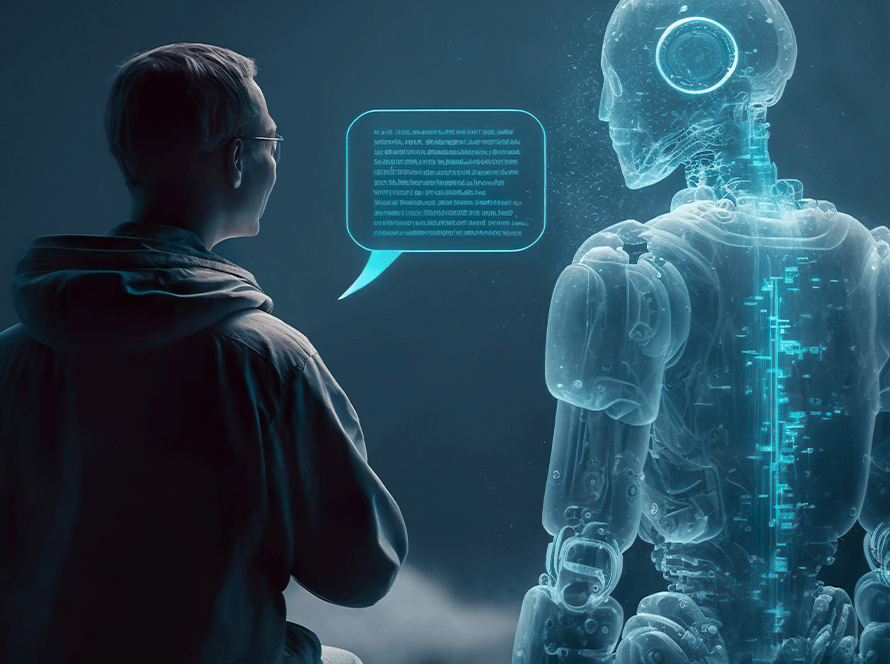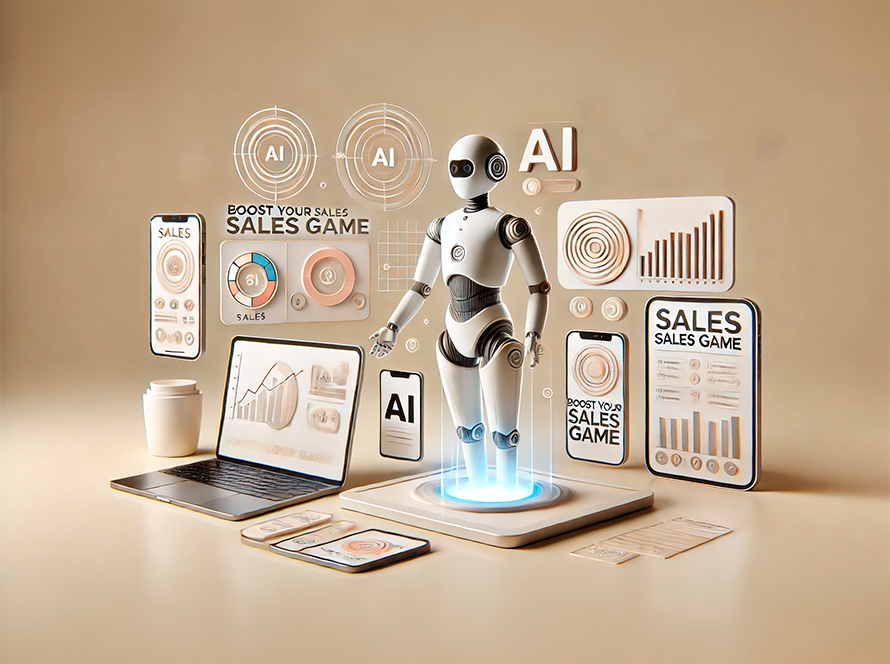“Discover how AI solutions for technical onboarding streamline processes, reduce errors and boost employee engagement.”
In the fast-paced world of technology, onboarding new employees, especially those in technical roles, has become increasingly complex. As companies strive to keep up with rapid technological advancements, the challenge of efficiently training and integrating new hires into their roles is more critical than ever. This is where artificial intelligence (AI) comes into play. By harnessing the power of AI, businesses can streamline their onboarding processes, reduce human error, and ensure that new employees are equipped with the knowledge they need to succeed. This article will explore how AI-driven solutions, such as those offered by Sales Closer AI, are revolutionizing technical onboarding processes.
Introduction to AI in Technical Onboarding
Technical onboarding refers to training new employees in the tools, technologies, and workflows used within a company. Traditionally, this process has been time-consuming and resource-intensive, often requiring extensive one-on-one training sessions. Research from the Brandon Hall Group shows that companies with a strong onboarding process improve new hire retention by 82% and productivity by over 70%. However, with the integration of AI, this landscape is rapidly changing.
AI in employee onboarding is not just a buzzword but a transformative approach that leverages machine learning, natural language processing, and data analytics to create more efficient, personalized, and scalable onboarding experiences. By automating repetitive tasks and providing real-time feedback, AI solutions can significantly reduce the time it takes for new hires to reach full productivity—sometimes cutting the timeframe by 40%.
How AI Solutions Streamline Onboarding for Technical Roles
One of the primary challenges in technical onboarding is quickly familiarizing new employees with complex systems and software. AI addresses this challenge by automating the delivery of training materials and assessments, ensuring that new hires receive the right information at the right time.
For example, AI-driven onboarding processes can include automated tutorials that guide employees through specific tools or platforms. These tutorials can adapt to the user’s pace, offering additional resources or explanations when needed. This personalized approach enhances the learning experience and ensures that no employee is left behind.
Furthermore, AI solutions can track the progress of each new hire, identifying areas where they may need additional support. This data-driven approach allows HR teams to intervene early, providing targeted training or resources to help employees overcome specific challenges. The result is a more efficient onboarding process that reduces the time and resources traditionally required for training.
Key Benefits of Implementing AI in Onboarding Processes
Integrating AI in technical onboarding offers several key benefits that can significantly impact a company’s operational efficiency and employee satisfaction.
1. Reduction of Human Error
Human error is an inevitable part of any manual process, and technical onboarding is no exception. According to IBM, businesses lose $3.1 trillion annually in the U.S. alone due to poor data quality and human error. AI solutions minimize this risk by automating key aspects of the onboarding process, ensuring consistency and accuracy across the board.
2. Personalized Training Experiences
Every employee has a unique learning style, and traditional onboarding processes often fail to accommodate these differences. AI, however, can analyze individual learning patterns and adapt training materials accordingly. This personalized approach not only improves engagement but also accelerates the learning process, helping new hires become productive members of the team more quickly. Personalized onboarding can increase employee performance by up to 50%.
3. Scalability
As companies grow, so does the need to onboard multiple employees simultaneously. Scaling traditional onboarding processes can be challenging, often requiring additional resources and trainers. AI-driven onboarding, on the other hand, can easily scale to accommodate any number of new hires, delivering consistent and high-quality training to all employees, regardless of the size of the onboarding class.
4. Improved Engagement and Retention
Employee engagement is crucial during the onboarding process, as it sets the tone for their experience within the company. AI tools can engage new hires through interactive training modules, real-time feedback, and gamified learning experiences. This level of engagement improves knowledge retention and contributes to higher levels of job satisfaction and, ultimately, employee retention.
AI Tools and Technologies for Effective Technical Onboarding
Several AI tools and technologies have emerged as game-changers in technical onboarding. These tools simplify the onboarding process and provide valuable insights that can be used to continually improve training programs.
1. AI-Powered Learning Management Systems (LMS)
AI-powered LMS platforms use machine learning algorithms to create personalized learning paths for each employee. These platforms can analyze data from various sources, such as previous training sessions, employee feedback, and performance metrics, to recommend the most effective training materials and methods for each individual.
2. Chatbots and Virtual Assistants
Chatbots and virtual assistants are becoming increasingly popular in the onboarding space. These AI-driven tools can answer common questions, provide step-by-step guidance, and even facilitate real-time communication between new hires and HR teams. By handling routine inquiries, chatbots free up HR professionals to focus on more complex tasks, improving overall efficiency.
3. AI-Based Analytics and Reporting
One of the most significant advantages of integrating AI in onboarding is the ability to collect and analyze data in real time. AI-based analytics tools can track employee progress, identify trends, and generate detailed reports that HR teams can use to refine their onboarding strategies. These insights are invaluable for making data-driven decisions that enhance the onboarding experience and improve outcomes. Organizations using AI-based analytics in onboarding have reported a 60% reduction in time spent on manual tracking and reporting.
4. Automated Content Delivery
AI can automate the delivery of onboarding content, ensuring that new hires receive the right information at the right time. Whether it’s sending out training videos, articles, or quizzes, AI tools can manage the distribution of content based on the employee’s progress and learning style. This automation reduces the burden on HR teams and ensures that all employees have access to the resources they need to succeed. AI-driven content delivery systems can reduce the time required for onboarding by up to 35%.
Case Studies: AI-Driven Onboarding Success with Sales Closer AI
Sales Closer AI has been at the forefront of integrating AI in technical onboarding processes, delivering innovative solutions that have transformed how companies train their new hires. Below are a few examples of how Sales Closer AI’s solutions have made a significant impact on clients.
1. Accelerating Onboarding for a Tech Startup
A rapidly growing tech startup faced challenges in onboarding multiple new developers simultaneously. The traditional approach was time-consuming, and the company struggled to keep up with its growth. By implementing Sales Closer AI’s onboarding solutions, the company could automate much of the process, reducing the time to full productivity by 30%. The AI-driven platform provided personalized training paths for each developer, ensuring they were proficient in the company’s tools and technologies within weeks.
2. Enhancing Engagement for a Global Corporation
A multinational corporation sought to improve engagement levels during the onboarding process for its IT department. Sales Closer AI introduced an AI-powered LMS that offered interactive and gamified learning modules. As a result, the company saw a 40% increase in employee engagement and a corresponding rise in knowledge retention. The success of this initiative led to the expansion of AI-driven onboarding across other departments.
3. Improving Retention for a Financial Services Firm
A financial services firm was experiencing high turnover rates among new technical hires, leading to significant training costs and lost productivity. By integrating Sales Closer AI’s analytics and reporting tools, the firm was able to identify key areas where new hires were struggling. This data allowed the HR team to tailor the onboarding process to meet the needs of new employees better. Within a year, the firm saw a 25% improvement in retention rates, significantly reducing onboarding costs.
Conclusion
The integration of AI in technical onboarding processes is no longer a futuristic concept but a reality that is transforming how companies train and integrate new employees. By automating repetitive tasks, personalizing training experiences, and providing real-time insights, AI-driven onboarding solutions like those offered by Sales Closer AI are helping businesses reduce the time and resources traditionally required for onboarding while improving employee satisfaction and productivity.
As the demand for skilled technical professionals continues to rise, companies that adopt AI solutions for onboarding will be better positioned to attract and retain top talent. With the right tools and strategies in place; businesses can ensure that their new hires are not only well-prepared but also fully engaged and motivated to contribute to the company’s success.
For more information on how Sales Closer AI can help your company revolutionize its technical onboarding processes, visit Sales Closer AI’s use cases, check out their pricing, or request a custom sales demo.
By embracing AI in employee onboarding, companies can unlock new levels of efficiency and effectiveness, paving the way for a more agile and resilient workforce.


